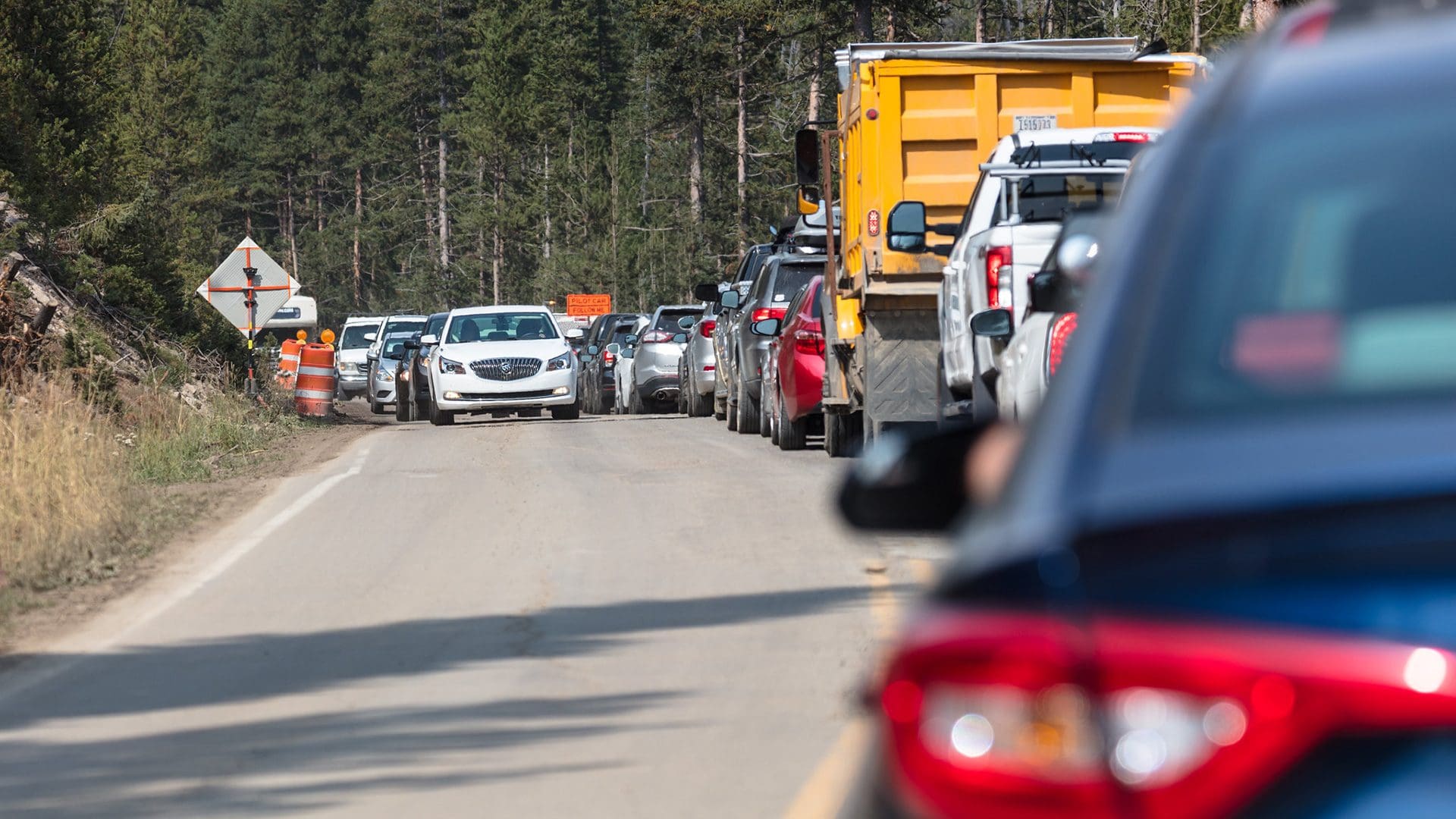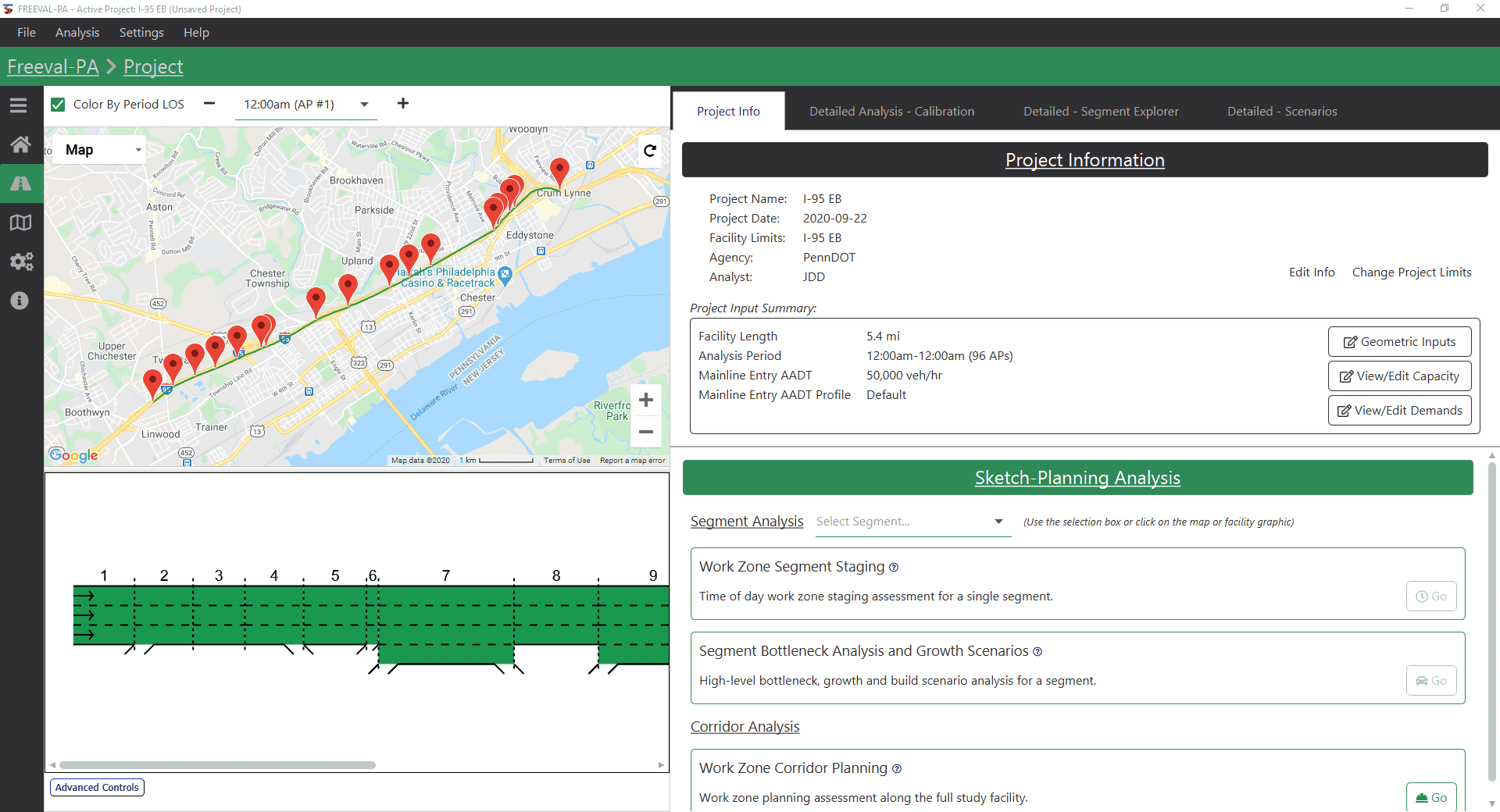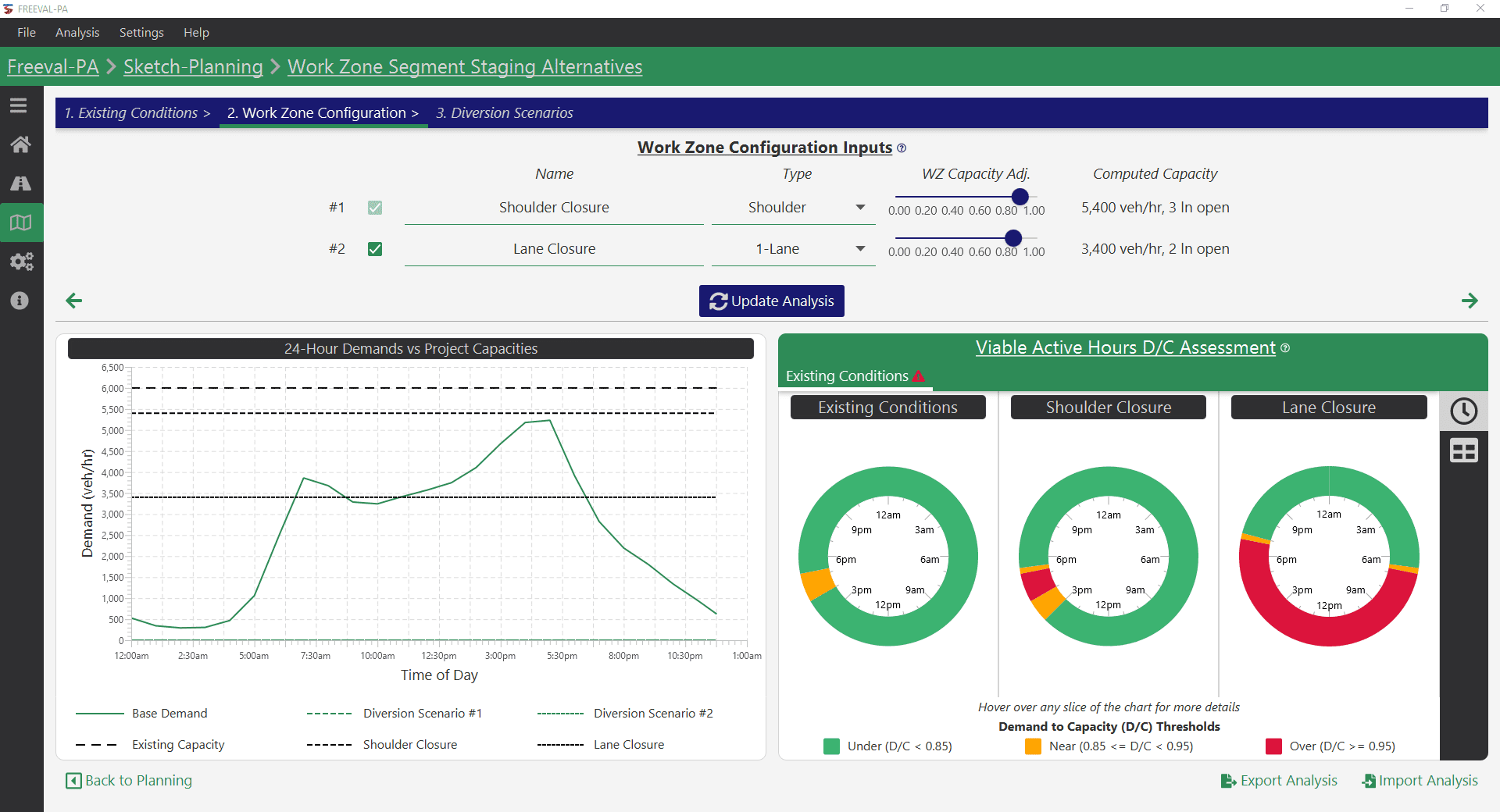October 14, 2020
A tool developed by Pennsylvania Department of Transportation (PennDOT) is changing the way PennDOT makes decisions about scheduling work zones.
Historically, identifying the optimal timing and strategy for construction and maintenance projects on freeways is complex. To pinpoint times and locations for work zones that don’t result in costly congestion and frustrated drivers, transportation engineers have turned to cumbersome spreadsheets or microsimulation models that can take weeks to populate and customize.
PennDOT’s tool, known as FREEVAL-PA, is taking the time and complexity out of these analyses on limited-access highways – cutting down weeks-long analyses down to hours, and hours-long analyses down to seconds. Here’s how the tool works, and how PennDOT is using it.

No one wants to come around the bend on a freeway and see congestion due to road work. A tool developed by Pennsylvania Department of Transportation (PennDOT) is giving them actionable information about scheduling work zones.
A New Way to Analyze Work Zone Impacts
FREEVAL-PA is a software tool that simplifies freeway analyses of all types, enabling PennDOT staff and consultants to quickly obtain actionable information about what traffic impacts they’ll see from different types of construction and maintenance projects on any limited-access highway facility in the state.
It can do this because it’s pre-loaded with information about Pennsylvania’s interstates and freeways. The software tool is programmed with the roadway characteristics of every freeway segment in Pennsylvania, along with traffic volume and speed data, weather data, terrain data, and a computational engine powered by the Highway Capacity Manual, the transportation industry’s guidebook for understanding capacity impacts of decisions.
Since the tool is pre-populated with this data, PennDOT staff and consultants can conduct high-level screenings of freeway segments in just a few seconds. Given a few simple inputs, the tool can provide a general idea of what impacts can be expected from various lane closures and work zone scenarios depending on the location, season, time of day, and other factors.
It takes just a few hours to perform a more detailed analysis that provides the full set of Highway Capacity Manual performance measures, including delays, travel times, queuing, and user cost outputs. These detailed results allow for a comprehensive analysis of freeway operations for construction, maintenance and planning/design projects.
The concept behind FREEVAL-PA was born in the 1990s at North Carolina State University, where it began as an Excel spreadsheet. In 2015, it moved to a Java-based tool. Now, the database exists statewide in Pennsylvania as a software tool with a redesigned user experience. Two of our Kittelson team members (Bastian Schroeder and Lake Trask) have been involved with the research behind it from the early stages.

FREEVAL-PA reflects facility-specific ramp and interchange details and a live map interface, shown here for the I-95 corridor near Philadelphia.
Benefits and Use Cases of the FREEVAL-PA Tool
One of FREEVAL-PA’s primary programmatic benefits to PennDOT is the ability to plan work zones on freeways in a streamlined and consistent manner. Many agencies assume that in order for road construction to not impact the traveling public, it must take place after 9pm and before 5am. However, because freeways are directional, there are actually many pockets of time throughout the day where lanes can be closed with minimal impact. FREEVAL-PA helps PennDOT pinpoint those optimal times. This moves projects forward more quickly and cuts costs because contractors can work daytime hours, not just nights and weekends which are more expensive. It also helps PennDOT avoid placing work zones at locations and times that would cause heavy congestion – which has both economic and sustainability impacts.
In addition, beyond work zone analyses, there are many scenarios where PennDOT can turn to FREEVAL-PA to obtain efficient and reliable information about impacts. For example, FREEVAL-PA can be used to run calculations about how long traffic backups can be expected when a road is shut down due to a crash. It can also be combined with INRIX data, which shows the performance of the roadway, to create a calibrated model showing the benefit/cost of future maintenance and operations projects.
Having this information helps PennDOT collaborate effectively with agency partners. For example, when roadway improvements need to be made and congestion is expected, PennDOT can communicate the level of emphasis behind getting the lane open again within a certain amount of time. This may also include communicating with the public to let them know about expected delays.
While it was possible to run these analyses before the development of FREEVAL-PA, it would previously take hours to conduct the high-level screening, and weeks of microsimulation to run a detailed analysis to predict the impacts of various projects. All data about the roadway facility would need to be obtained and then plugged into a custom model. Using FREEVAL-PA, PennDOT can now do high-level screenings in a few seconds and detailed analyses within a few hours. Running a high-level screening on FREEVAL-PA is as simple as looking up directions on your phone.

The work zone planning interface shows expected congestion from three scenarios in a single screen.
Future Applications of FREEVAL-PA
Not only does the potential for FREEVAL-PA to be replicated in other states promises future value to our profession, but there are also opportunities for PennDOT to use FREEVAL-PA for additional systems that increase efficiency and minimize cost.
One example is a lane reservation system, in which PennDOT will be able to view optimal lane closure times and reserve lanes for work zones, much like an open table system for restaurants. FREEVAL-PA provides the underlying logic that will make this system possible.
Ultimately, having statewide roadway and traffic data pre-programmed into a software tool opens lays the groundwork for many future applications.
Reach Out
If you’d like to talk to our team members who collaborated with PennDOT on FREEVAL-PA, we welcome your questions and ideas! You can contact us here:
Ed Myers, Senior Principal
Bastian Schroeder, Principal Engineer
Lake Trask, Data Scientist
Alexandra Jahnle, Senior Engineer
